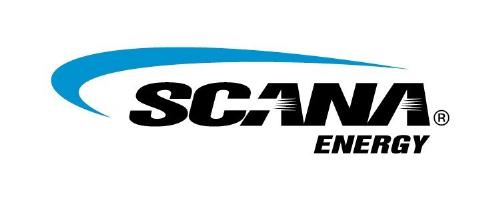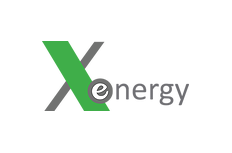
Blog
-
Geiger Readings for Sep 10, 2017
Ambient office = 95 nanosieverts per hourAmbient outside = 79 nanosieverts per hourSoil exposed to rain water = 70 nanosieverts per hourBroccoli from Central Market = 73 nanosieverts per hourTap water = 73 nanosieverts per hourFilter water = 68 nanosieverts per hour -
Geiger Readings for Sep 09, 2017
Ambient office = 115 nanosieverts per hourAmbient outside = 77 nanosieverts per hourSoil exposed to rain water = 70 nanosieverts per hourRomaine lettuce from Central Market = 101 nanosieverts per hourTap water = 134 nanosieverts per hourFilter water = 123 nanosieverts per hourDover sole – Caught in USA = 75 nanosieverts per hour -
Nuclear Reactors 299 – Problems At VC Summers With The Construction Of Two Westinghouse AP1000 Reactors
I have blogged before about the two new Westinghouse AP1000 nuclear power reactors that were under construction at the V.C. Summer Nuclear Power Station in South Carolina which is owned by SCANA and Santee Copper. The construction began in 2009 with the expectation that the new reactors would be ready to operate in 2018. The initial estimated budget was eleven billion dollars.
By the year 2016, the construction project employed over five thousand workers at the site near Jenkinsville, S.C. This project and the Geogia project to build two more AP1000s were supposed to be the start of a “nuclear renaissance” in the U.S. where no new power reactors had been built for decades. A newly revealed cache of emails and other documents regarding the new V.C. Summer reactors contained suggestions for talking points about how well the project was going and how important it was to South Carolina.
In spite of the positive talk, the upper management of SCANA and Santee Copper were already discussing serious problems with the construction of the reactors. In December of 2016, state regulators were concerned about the lack of a construction schedule. Westinghouse nuclear division was in serious financial difficulty and causing huge problems for its parent company, Toshiba of Japan. The executive director of the South Carolina Office of Regulatory Staff wrote a letter to the CEO of SCANA which said, “It is difficult for ORS to do our job, and for SCE&G to do its due diligence as an owner without timely access to this critical information regarding budget and schedule risks.”
Relations between SCANA and Santee Copper and their prime contractor Westinghouse were deteriorating before reports surfaced that Westinghouse was considering declaring bankruptcy. In March of 2017, Westinghouse admitted that they did not have a full construction schedule. SCANA and Santee Copper executives claimed that Westinghouse had lied to them. Emails reveal multiple charges that both Westinghouse and Toshiba had repeated lied about the project. Bechtel did an audit of the procedures in place at the V.C Summer construction site. They concluded more than a year before the revelation that SCANA and Santee Copper simply did not have the necessary oversight in place at V.C Summer to be aware of serious problems with the construction.
As problems piled up in 2017, SCANA and Santee Copper considered cancelling the whole project. By the end of April, only thirty five percent of the construction was complete. The design had not be finalized but engineers claimed that they only a few percent of the necessary work to accomplish. Ninety percent of the materials necessary to complete the work had been delivered to the site. If the project were cancelled, SCANA and Santee Copper would be saddled with the cost of materials and equipment that would not be used.
In early June, the CEO of SCANA told the board members that completion date had been pushed back four years. The estimated total cost for the project was now twenty four billion dollars, more than double the original estimate of eleven billion dollars. By early July, it was obvious that SCANA and Santee Copper executives were convinced that the project was doomed. They were talking about cancelling a project which had already absorbed nine million dollars. The CEO told the board that the only hope for the project would be if the U.S. government, the State of South Carolina, or another utility company bailed out the project. A plea was made to the Department of Energy and was rejected. SCANA and Santee Copper officially pulled the plug in August.
-
Geiger Readings for Sep 08, 2017
Ambient office = 106 nanosieverts per hourAmbient outside = 141 nanosieverts per hourSoil exposed to rain water = 140 nanosieverts per hourAvocado from Central Market = 114 nanosieverts per hourTap water = 100 nanosieverts per hourFilter water = 91 nanosieverts per hour -
Nuclear Reactors 298 – X-energy And Centrus Join Forces To Manufacture Fuel For Pebble Bed Reactors.
X-energy is a company that develops advanced nuclear reactor fuels. Centrus is a company that specializes in nuclear fuel technology. These two companies have announced that they are cooperating in the construction of a nuclear fuel fabrication facility. This facility will create fuel for X-energy reactors and other advanced nuclear power reactors. The terms of the Memorandum of Understanding that the two companies signed include preparing a plan for the deployment of X-energy TRISO fuel, designing a competitive and highly automated fuel manufacturing line and seeking funding for a future commercial fuel production facility.
The CEO of X-energy said, “X-energy is focused on both our high temperature gas-cooled reactor development and the fuel needed to power our reactors. The Department of Energy has spent close to $400M in developing and qualifying the UCO TRISO particle in preparation for advanced reactor commercialization. X-energy, in partnership with Centrus and taking advantage of its domestic enrichment experience and engineering know-how, is anxious to evaluate how we can together move UCO TRISO into final fuel form production, benefitting many in the industry.”
The Centrus CEO said, “Our technical and engineering teams are eager to help X-energy develop TRISO fuel for their reactor. We agree that American leadership in the global nuclear market requires that we develop an end-to-end domestic capability, from high-assay low-enriched uranium enrichment through fuel production, for next-generation reactors.”
X-energy’s Tristructural-isotropic (TRISO) fuel is a type of micro fuel particle. It has a kernel of Uranium Oxycarbide enriched to about sixteen percent U-235. The kernel is about a millimeter in diameter. This core is surrounded with carbon and ceramic layers. These layers prevent the release of radioactivity. Then eighteen thousand of these TRISO particles are embedded in a graphite sphere called a pebble. Each TRISO particle maintains its own integrity regardless of the integrity of the pebble and traps the fission products produced by the fission reaction. About two hundred thousand of these pebbles are used to fuel an X-energy pebble bed reactor. The graphite around the pebble moderates the fission reaction.
The X-energy Xe-100 pebble bed reactor is cooled with helium gas. The heat generated by the reactor can be used for applications that require process heat or it can be converted to electricity by a helical coil steam generator. The Xe-100 can produce about seventy six megawatts of power. One advantage of pebble bed reactors is that they cannot melt down so it would be safe to locate them near a densely populated area. The small size and safety makes them a good choice for applications where a full-sized light-water reactor would not be appropriate. Pebble bed reactors are one of six types of reactors known as Generation IV.
X-energy has a design to integrate four Xe-100 reactors to produce three hundred megawatts of power. This “four pack” would only require about thirteen acres for a site. All the components of the Xe-100 reactor can be delivered by truck so the reactors would be assembled at the site from modular parts.
-
Geiger Readings for Sep 07, 2017
Ambient office = 116 nanosieverts per hourAmbient outside = 154 nanosieverts per hourSoil exposed to rain water = 140 nanosieverts per hourBeefsteak tomato from Central Market = 109 nanosieverts per hourTap water = 94 nanosieverts per hourFilter water = 85 nanosieverts per hour -
Nuclear Weapons 305 – South Korea Working On Big Conventional Warheads To Hit North Korean Underground Military Bunkers
The news has been full of North Korea lately because of their missiles and hydrogen bomb tests. South Korea is trying to decide how best to counter N.K. if it comes to a fight. Some South Koreans have suggested that they should develop their own nuclear arsenal. Other South Koreans want the U.S. to bring tactical nuclear weapons back to S.K. For the moment, S.K. is working on developing conventional weapons that could be used to respond to N.K. threats.
Military analysts say that S.K. appears to be working on a super powerful conventional missile warhead that would be able to destroy any of N.K.’s underground military installations and command bunkers. The S.K. media has adopted the name “frankenmissile” for the new weapon system. The new ground-to-ground ballistic missile would be able to carry a four thousand pound warhead and reach anywhere in N.K.
In 2012, an agreement was signed between the U.S. and S.K. to limit the size of any warhead on any S.K. missile to under one thousand one hundred pounds. Recently, the U.S. president and the S.K. president agreed in principle to cancel the restriction on the maximum size of S.K. warheads. The two leaders spoke by phone and the S.K. president said “It is crucial to come up with powerful and practical measures that can make North Korea realize the impact of its actions.” After the phone call, a spokesperson for the S.K. president said, “Sharing the view that South Korea needs to bolster its defense capabilities to counter North Korea’s provocations and threats, the two leaders agreed in principle to revise the missile guidelines to a level that the South Korean side desires.”
A few days after the phone conversation between the two leaders, reports surfaced that the new frankenmissile was under development. The development of this missile would give S.K. more independence and flexibility in countering N.K. belligerence. The U.S. military already has “bunker buster” missiles stored in S.K. that have warheads of up to fifty three hundred pounds. Both the S.K. frankenmissile and the U.S. bunker busters are much smaller than the biggest conventional bomb in the U.S. arsenal. This bomb is referred to as “MOAB” which stands for “Mother of All Bombs”. It has a weight of over eighty four hundred pounds. One of these was recently dropped in Afghanistan. Russia claims that it has a conventional bomb four times more powerful than MOAB.
In addition to the development of the frankenmissile, S.K. also has plans for infiltration missions against N.K. leaders and critical military facilities. In the event of an escalation of hostilities on the Peninsula, S.K. would send in highly trained teams to try to basically decapitate N.K. and destroy its ability to carry out attacks on S.K. S.K. representatives have said that they want U.S. special forces to help them train a brigade to carry out such missions against N.K. They hope to have the brigade trained and ready by the end of this year.
South Korean ballistic missile:







